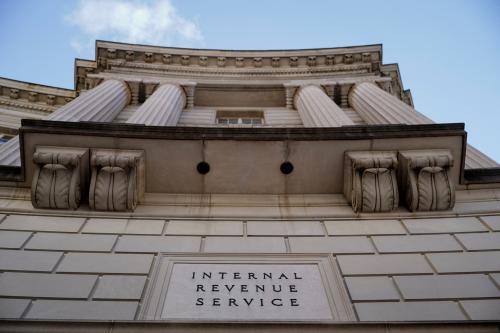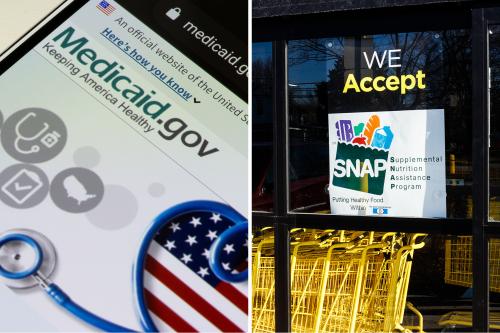The landmark Mormon-gay compromise that overwhelmingly passed deep-red Utah’s legislature last week isn’t a template for other states. But it’s a doorway. And possibly also a pathway.
The agreement pairs antidiscrimination protections for LGBT Utahns with religious-liberty protections for faith-based organizations. No, the agreement can’t be picked up and copied elsewhere. But it got the attention of gay-rights and religious-rights activists nationwide; it suggests new grounds for conversations between the two sides; and it suggests a fruitful style of negotiation.
Those were my own takeaways from yesterday’s panel discussions at Brookings, “Gays, Mormons, and the Constitution: Are there win-win answers for LGBT rights and religious conscience?” You can watch or listen to the event here—and in my humble opinion you should, because it gathered key leaders from Utah and national experts for fast-moving conversations that were packed with much more insight and detail than I can summarize. But here are a few points of interest.
Depolarization can happen—really!—but it takes time and effort. Key Utah leaders—former Gov. Mike Leavitt (a practicing and well-connected Latter-Day Saint, though not a church official or spokesman), Salt Lake County Mayor Ben McAdams (who worked on a successful 2009 Salt Lake City ban on sexual-orientation discrimination), and Equality Utah director Clifford Rosky agreed that the aftermath of the Church’s endorsement of California’s anti-gay-marriage Proposition 8 in 2008 left scars of anger. But the church and Equality Utah had a series of confidence-building conversations and realized that continued confrontations would lead to mounting casualties on both sides. Meanwhile, the electorate and many politicians tired of zero-sum, polarized politics. Those factors came together, but it took patience.
Simultaneity was a key to success. “There is a rhythm about legislation,” said Leavitt. The specifics of the Utah deal may not apply elsewhere, but the pathway is a model—and it’s a path that both sides need to walk side-by-side. “It has to happen at the same time,” so both sides see real gains.
Utah won’t be a template for other states, because no such template exists. Because Utah’s pre-existing antidiscrimination laws already had broad religious exemptions and didn’t cover public accommodations (just employment and housing discrimination), negotiators didn’t have as big a gap to close as in some other places. Diament and Warbelow both endorsed the Utah deal—a significant finding of common ground. But they both balked at any implication that the idea could be copied elsewhere, or that they’d automatically endorse a retread.
The deal will start some interesting new conversations. Nathan Diament of the Orthodox Union and Sarah Warbelow of the Human Rights Campaign said their respective constituencies have taken note of events in Utah and the positive outcome. In the LGBT world, reactions are “very mixed” but “there will be greater willingness to have these conversations,” said Warbelow. Diament concurred. Heads have turned.
Utah’s free-speech protections are a palpable hit. “Great,” said Diament, asked about the Utah deal’s innovative prohibitions on firing people for taking political or moral positions outside the workplace. “We think it’s great,” echoed Warbelow. Turns out that religious and gay folks share worries about losing their livelihoods if they, say, take a stand on a controversial initiative like Prop 8, so both sides saw this new element as a win. Leavitt called the Utah deal “a legislative toolkit available to people in any jurisdiction”; my guess is that the speech protections are a tool we’ll see used in other places.
Consensus may be creeping closer for federal legislation. Warbelow said (I’m paraphrasing) that she can support religious-freedom protections that track with existing law and don’t impose special burdens on LGBT people, and Diament said (again I paraphrase) that he can support LGBT antidiscrimination protections that track with existing law and don’t create special carve-outs for LGBT people. The devil is in the details (same-sex marriage, to name an obvious example, raises issues that don’t apply to other minority groups), but the agreement on a neutral baseline seems like a good place to start talking.
Listen to the discussion below:
p>



Commentary
The landmark LGBT-Mormon compromise in Utah
March 17, 2015